Workspace One - iOS Configuration Guide
The following contains procedures for deploying Workspace One for iOS.
To add the Blocksi for iPad app to Workspace ONE
Go to the Workspace ONE console.
Click the Resources > Apps > Native > Purchased tab.
Click the Sync assets button.
Note
A token is provided to you to pass the iOS app from Apple Business Manager to Workspace ONE using sToken.
Click the Blocksi for iPad app. If the app is shown as Unknown, click Unknown and type the Name and Bundle ID to com.blocksi.dnsproxy.
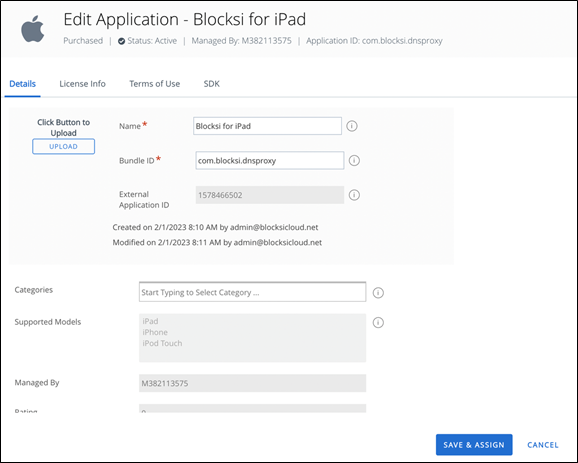
Click SAVE > ASSIGN. The Distribution fields should look like the following:
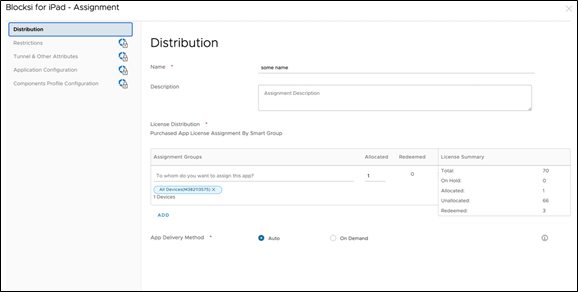
Go to the Application Configuration section.
Turn the Send configuration toggle on.
Click the Upload XML button and upload the ios-spec-file.xml file.
Note
You need to change the organizationId to match your main super-admin account. You may also change the adminPassword to any password of your choice or keep 123Blocksi as the standard password
If the customer does not use user authentication or has one policy for the whole company, the keys userAuthEnabled and userId should be deleted. If everything is correct, you will see the set of your conf keys. See the example below.

Note
If you cannot see those keys, the XML file format is incorrect, or Workspace ONE cannot parse this configuration file. You are not informed that something went wrong. In this case, check the XML file or send it to us for review.
Regarding the Configuration values, more details are available in the Configurable Values for the iOS Filtering App document.
Click Create > Publish
To add the app profile
Go to Resources > Profiles & Baselines > Profiles > Add > Add Profile > Apple iOS.
Select Context: user or device profile. The Workspace ONE console does not have UI for DNS Proxy settings implemented, but it is reachable through Custom Settings.
Go to Custom Settings (at the very bottom of the list), select the Enable Custom Lookup Value checkbox, and paste text from the iOS-custom-policy- configuration.plist file. The result should look like this:
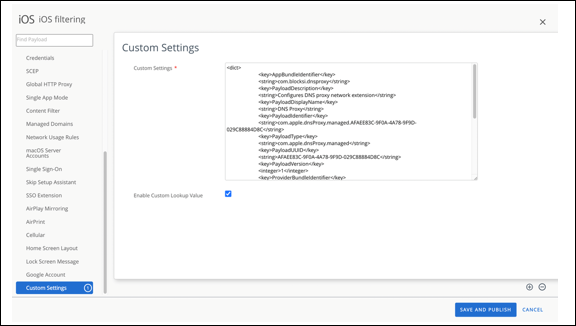
Go to General payload. These settings do not affect the functionality of the application; needless to say that Smart groups should include target devices (or users). The customer will fill these fields according to own requirements. Overall, it should look something like this:
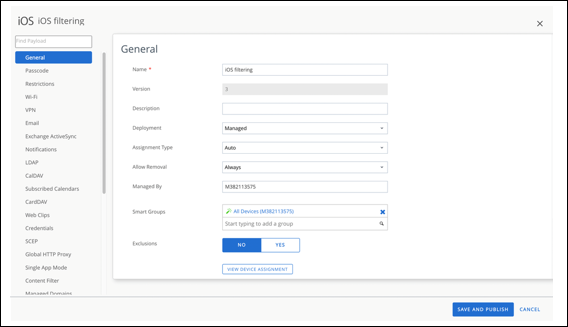
Click SAVE & PUBLISH.
Click PUBLISH.
IMPORTANT:
Make sure that the profile and Blocksi for iOS app is assigned to target device(s).
Make sure that the app is installed on target device – the install might take some time.
Make sure that the profile is installed properly on the device. To do this, on the iOS device, go to Settings > General > VPN & Device Management > Device Manager > More Details. The DNS proxy should be shown there with your set IDs and should look like this.
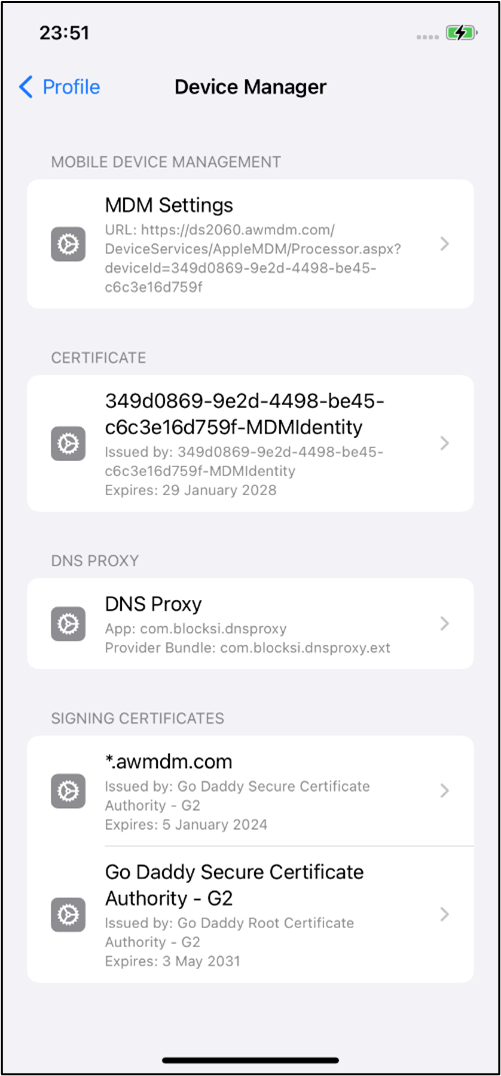
Go to the Blocksi for iOS app.
Make sure the app says Everything is ok.
Click Details and type the admin password. This is the value of the adminPassword key from the app config/profile payload - Password123 in this case. Make sure that values are passed properly.
Make sure the DNS proxy is running.
Go to Settings > VPN & Device Management > DNS.
To create the filtering policy, please see Configuring the iOS Filtering Policy on the BMEE Admin Dashboard